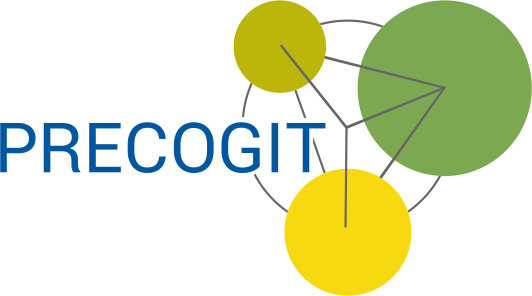Artificial intelligence (AI) is becoming more and more present in both private and business life, but what is actually behind it and what should be considered with AI?
The term AI was developed as early as the late 1950s as an interdisciplinary research field and has evolved over the decades in line with new technical possibilities. A pragmatic, useful definition is:
“Artificial intelligence is the property of an IT system to exhibit “human-like”,
intelligent behaviour.
While classical IT systems follow the basic principle “input -> processing -> output”, modern AI systems show the following core abilities:
Perceive – Sense
Understanding – Comprehend
Act
Learning – Learn
The figure shows the interaction of the core capabilities. What is new here is understanding and learning. AI systems are trained, learn and can thus achieve better, or adapted, results than conventional, static processes that are based on hard-coded sets of rules.
Source: Bitkom / Artificial Intelligence – Economic Importance, Social Challenges, Human Responsibility
The goal of AI is to intelligently support humans in achieving their goals. There are various use cases for this, such as dialogue processes between humans and machines, for example in the form of ever-improving speech recognition. Another use case is intelligent automation, i.e. moving away from fixed rules to learning systems. In addition, there is intelligent decision support, where AI supports humans in making decisions, e.g. integrated in business processes.
The question now is, when does AI really work well and when can it also lead to good decisions and thus provide optimal support?
One secret to success here is the mixture of human expertise and fast data processing. It is not enough to rely on AI alone, or to leave the system to its own devices. Without monitoring the training of an AI or supervised learning, in whatever form, even the best and fastest AI runs the risk of learning erroneous patterns.
Furthermore, the goal must be to intensify the use of data from all available sources to enable fact-based decisions and data-driven processes. Generally, this data comes from sensors, from existing IT systems or from “human” sources. The quality of these data sources is often critical. Reasons for this are technical errors in data acquisition, transmission or processing, errors in the interpretation and further processing of data, errors in the manual input of data or even the deliberate manipulation of data. If algorithms deliver incorrect results due to faulty data sources or incorrect parameterisation, this makes the added value of the algorithm doubtful. Good results can therefore only be generated on the basis of good data quality.
In summary, AI thus offers good decisions when:
High quality data is readily available
The human being is still integrated
It performs more than a pure control function.
The more complex the application area, the more important the human counterpart becomes for the AI.
If you want to delve deeper into the topic, you will find a good, detailed look here: https://www.bitkom.org/Bitkom/Publikationen/Entscheidungsunterstuetzung-mit-Kuenstlicher-Intelligenz-Wirtschaftliche-Bedeutung-gesellschaftliche-Herausforderungen-menschliche-Verantwortung.html

